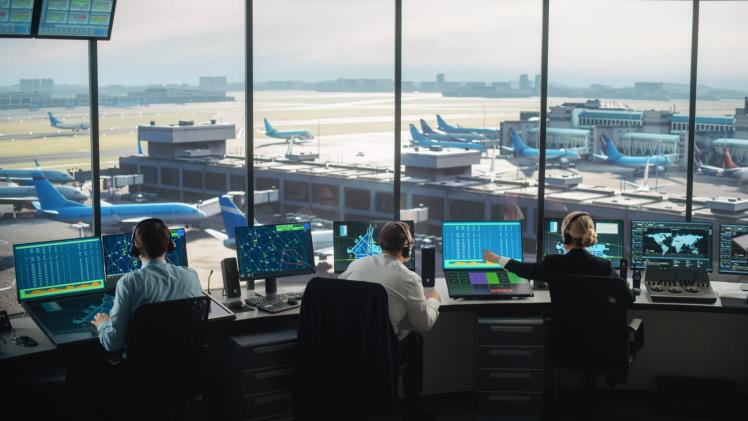
The evolution of air travel has transformed the way people connect globally, but as passenger numbers increase, so do the challenges in ensuring safety. Airport security systems have become a focal point in the fight against threats to aviation, and innovations in technology are paving the way for safer and more efficient travel. This article explores the latest advancements in airport security systems and how they contribute to enhancing passenger safety for the future.
Contents
Biometric Identification Systems
One of the most significant advancements in airport security is the integration of biometric identification systems. These technologies utilize unique physical characteristics such as fingerprints, facial recognition, and iris scans to create a secure and efficient screening process. Biometric systems not only expedite the verification of passenger identities but also reduce the potential for human error, making them a powerful tool in the fight against identity fraud.
Airports around the world are beginning to implement biometric kiosks for check-in and boarding, allowing travelers to move through the airport with minimal friction. For instance, passengers can scan their faces at various points, linking their identity to their boarding pass, thus streamlining the entire process. By enhancing passenger flow and reducing queue times, biometric identification significantly decreases the stress levels typically associated with air travel, all while maintaining a high-security standard.
Artificial Intelligence and Machine Learning
Artificial intelligence (AI) and machine learning are revolutionizing airport security systems by providing data-driven insights that enhance threat detection and response capabilities. AI algorithms analyze vast amounts of data from various sources, including baggage scans and surveillance footage, to identify anomalies or potential threats. These technologies can quickly adapt to new threats by learning from previous data patterns, making them invaluable in a rapidly changing security landscape.
For instance, advanced machine learning models can improve the accuracy of image recognition in X-ray scans, reducing false alarms while ensuring that genuine threats are swiftly identified. By leveraging AI, airport security teams can efficiently allocate resources, ensuring that high-risk areas receive the attention they require while allowing low-risk passengers to pass through more quickly.
Automated Screening Technologies
Automated screening technologies are another critical innovation enhancing airport security systems. These systems utilize advanced imaging technology to provide a thorough inspection of carry-on baggage and personal items without requiring passengers to remove their belongings. For example, 3D computed tomography (CT) scanners are being deployed in many airports, allowing security personnel to visualize the contents of bags in three dimensions.
These scanners not only improve the detection of explosives and other dangerous items but also speed up the screening process. Passengers no longer need to empty their pockets or remove laptops and liquids from their bags, resulting in a smoother, more efficient experience. The reduction in the physical handling of luggage also minimizes the potential for contamination in a post-pandemic world, contributing to overall passenger safety.
Enhanced Cybersecurity Measures
In an era where digital threats are on the rise, cybersecurity has become an essential component of airport security systems. As airports increasingly rely on technology for operations, the potential for cyberattacks poses a significant risk to passenger safety and security. Innovations in cybersecurity are being implemented to protect sensitive data and ensure the integrity of airport operations.
Airports are investing in advanced firewalls, intrusion detection systems, and encryption technologies to safeguard against cyber threats. Additionally, regular training for staff on cybersecurity awareness is crucial, as human error remains a significant vulnerability. By fostering a culture of cybersecurity vigilance, airports can enhance their overall security posture and protect passenger information from potential breaches.
Passenger Engagement and Education
Enhancing passenger safety is not solely reliant on technology; it also involves engaging and educating travelers about security protocols. Many airports are investing in informational campaigns to inform passengers about the importance of security measures and how they can contribute to their safety. By providing clear communication through signage, videos, and interactive displays, airports can help passengers understand the role they play in maintaining security.
Moreover, educating travelers on what to expect during the screening process can alleviate anxiety and streamline operations. For example, clear guidelines on prohibited items, as well as tips for preparing for security checks, can lead to a more efficient experience, allowing security personnel to focus on identifying genuine threats.
Collaboration and Information Sharing
The complexity and interconnectedness of modern air travel necessitate collaboration among various stakeholders, including governments, airport authorities, airlines, and security agencies. Innovations in airport security systems are increasingly reliant on the sharing of information and resources. Collaborative efforts can lead to the development of standardized protocols and the sharing of intelligence regarding emerging threats.
For instance, the establishment of global databases that track known threats and suspicious behaviors can significantly enhance security measures across multiple jurisdictions. By fostering a culture of cooperation, airports can create a more unified and effective approach to passenger safety, ensuring that all stakeholders are prepared to respond to potential threats swiftly.
Sustainable Security Practices
As the world increasingly prioritizes sustainability, airport security systems are also evolving to embrace eco-friendly practices. Innovations in energy-efficient technologies, such as solar-powered screening machines and sustainable materials in security infrastructure, are becoming more common. These practices not only reduce the environmental impact of airport operations but also align with the growing expectations of environmentally conscious travelers.
By integrating sustainable practices into security systems, airports can contribute to broader efforts to combat climate change while ensuring that passenger safety remains a top priority.
In summary, the future of airport security systems lies in the integration of innovative technologies, collaborative efforts, and a commitment to passenger engagement and education. As advancements continue to emerge, airports must remain agile and adaptable to ensure that they not only meet the evolving security landscape but also enhance the overall travel experience. Investing in these innovations will help create a safer, more efficient, and more enjoyable journey for passengers worldwide.